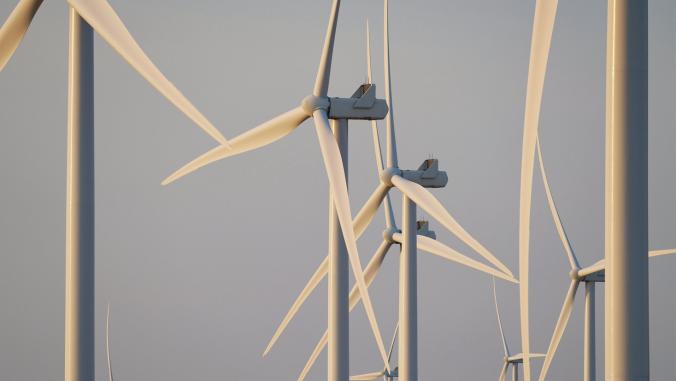Could smart meters stem $14 billion in annual water losses?
<p>Upgrading aging water infrastructure is costly, but advanced technology can help utilities detect leaks or unbilled water usage faster.</p>

Water pipe image by nostal6ie via Shutterstock.
Debates about most smart meter installations have centered on projects at electric utilities.
But intelligent networks and sensor technology could have an even more profound positive impact on aging water infrastructure around the world, according to several experts participating in a Navigant Research seminar this week.
Those benefits include operational cost reductions ranging from 3 percent to 5 percent, more accurate billing processes, enhanced leak detection, better customer service and even improved consumer conservation.
"Business as usual means the usual losses in both water and money," said Doug McCall, marketing manager for Sensus, a Raleigh, N.C., maker of advanced metering infrastructure (AMI) that is used by more than 475 electric, water and gas utilities representing 16 million customers.
Neil Strother, senior research analyst for Navigant Research, put some of those losses into context during the hour-long discussion, "Intelligent Water Networks." He cites World Bank figures, for example, that suggest the annual global value of non-revenue water -- water produced and lost by utilities -- is close to $14 billion.
On average, city water utilities lose up to 30 percent of their water resources to non-revenue costs, such as leaks or water that goes accounted for. But he estimates it is way higher than that in places such as Delhi, India (53 percent), and even Dublin, Ireland (40 percent).
Because it's too cost-prohibitive to completely overhaul water pipes, pumps and reservoirs that are often 50 to 100 years old, more utilities are investing in smart meters as a way of gaining more intelligence about what they have. Deployments will grow from 7.5 million globally in 2012 to more than 10.5 million by 2017, a compound annual growth rate of 6.9 percent.
"There is a real opportunity to spend limited money on resources that will really help," Strother said.
How much could this help? According to McCall, smart water networks could save utilities up to $12 billion per year, by recovering non-revenue water and eliminating the up to 14 percent of residential consumption lost to undetected leaks. Another area where smart meters could help: customer service, where about 43 percent of utilities are relying on outdated technology.
Albuquerque among pioneering U.S. cities
During the seminar, Strother discussed three municipal installations of smart meters that illustrate the benefits of this technology. Here are some brief details:
San Francisco: The $50 million project, which uses 177,000 new meters from Aclara, transmits hourly data back to the utility four times daily. This has enabled the city to reduce costs for meter reading and billing, investigate unusual consumption patterns earlier to check for leaks, and eliminate billing estimates.
Nashville: The Tennessee city has about 45,000 smart meters dedicated to water. It expects many of the same benefits as San Francisco, along with the ability to automate certain tasks, such as account activation.
Dubuque, Iowa: Working in collaboration with IBM to more closely analyze consumption, the city has reduced water usage by 6.6 percent (about 3,400 gallons per household), increased the likelihood of finding leaks eightfold, and saved an aggregate of $191,000 annually.
The initial impetus for a smart meter installation in Albuquerque, N.M., was the desire for "clean, accurate reads" about water consumption, said Hobert Warren, division manager for the Albuquerque Bernalillo County Water Utility Authority, during the Navigant Research seminar.
The utility, which covers about 350 square miles and serves a population of 670,000, manages about 200,000 residential meter connections and 850 commercial customers in the metro area. It phased in the rollout, building off savings and results early on to help justify future retrofits to key stakeholders and potential skeptics throughout the organization.
"Although I can't share the information yet, the [return on investment] was a lot shorter than I was expecting," Warren said.
Here are some specific positive outcomes that Albuquerque has experienced, aside from a demonstrable decrease in water consumption:
• Improved customer engagement: On multiple occasions, the utility has been able to proactively address pipe breaks or infrastructure leaks before they became a major public relations challenge, by analyzing typical usage patterns and responding to ones that are out of the norm.
• Insight in the field: Managers and field crews can receive alerts on mobile devices, as appropriate, which makes for quicker response times. "By involving them, we really got a lot of buy-in on this," Warren said.
• Amplified field crew resources: The utility redeployed personnel previously focused on meter reading into field service positions, optimizing limited resources. "It has shifted the way we do things," Warren said.
• Rate stabilization: The water authority already has some of the lowest rates in the region. Its ability to manage consumption more closely and accurately has enabled it to stabilize increases to a rate of 5 percent every other year, based on revenue requirements.
Editor's note: To learn more about this topic and the convergence of sustainability and technology, be sure to check out VERGE SF Oct. 14-17.
Water pipe image by nostal6ie via Shutterstock.





